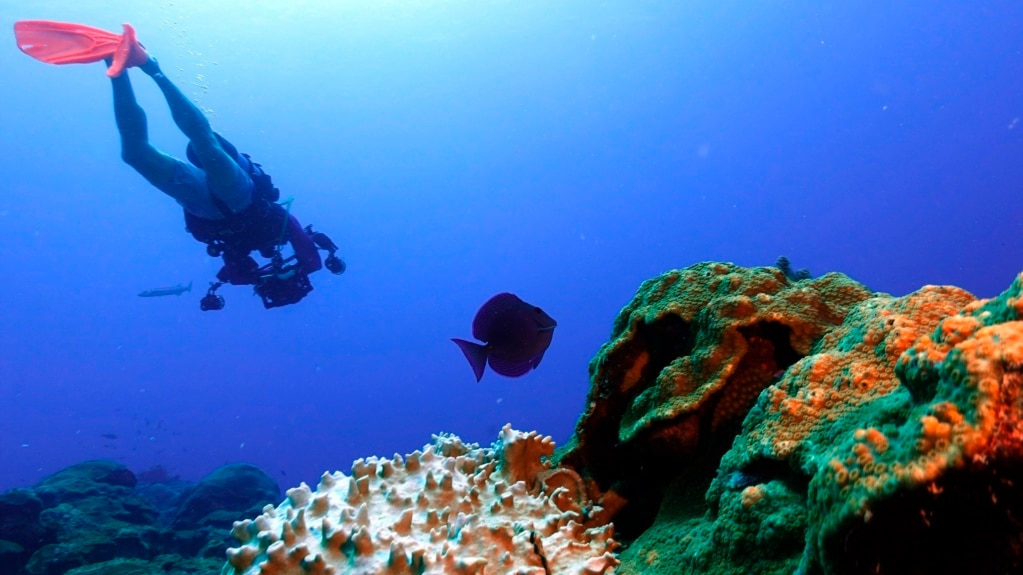Scientists say coral reefs around the world, from Australia to Kenya, are experiencing bleaching for the fourth time in the last 30 years. They say the colorful undersea structures are turning white as a result of warming ocean waters.
The U.S. National Oceanic and Atmospheric Administration (NOAA) and the International Coral Reef Initiative said Monday that at least 53 countries, territories, or local economies have reported bleaching from February 2023 to now.
Coral bleaching happens when the small ocean animals face stress and expel the algae that provide them with energy and give them their color. If the bleaching is severe and long-lasting, the coral can die.
Why does it matter?
Coral reefs cover less than one percent of the ocean floor, but they help marine ecosystems and economies. Reefs are the rocky structures that corals create over time.
It is estimated that one fourth of marine life depends on reefs for shelter, food and as a place for reproduction. Coral reefs also help coastal communities by forming a protective barrier against storms and large waves. A 2022 study in the publication Marine Policy found that reefs help to avoid property damage for more than 5 million people worldwide.
The Global Coral Reef Monitoring Network estimates that reefs provide about $2.7 trillion in goods and services every year. That includes billions of dollars from tourism to the value of coastal protection. But rising sea temperatures and human destruction have endangered corals.
People have observed bleaching happening in different parts of the world for some time. In the world’s largest coral reef, Australia’s Great Barrier Reef, bleaching affected 90 percent of the coral observed by scientists in 2022. In the Florida Coral Reef, scientists reported notable bleaching last year.
But for scientists to declare a worldwide bleaching event, it has to be documented within each of the major oceans, including the Atlantic, Pacific, and Indian oceans, in both the Northern and Southern Hemispheres.
The fourth worldwide bleaching event
With bleaching happening in the Indian and Pacific oceans, NOAA experts expect that this worldwide bleaching event could be the most extensive yet.
Scientists have reported widespread bleaching in reefs in the Caribbean Sea. Last August coastal sea surface temperatures were between one and three degrees Celsius above normal. And scientists have documented huge “die-offs” across the area.
Lorenzo Alvarez-Filip is with the National Autonomous University of Mexico. He said, "What is happening is new for us, and to science." He added, "Everything that you can see while diving was white in some reefs."
What is happening now is being called the fourth worldwide bleaching event. The last one continued for three years and ended in May 2017. It was caused by the warm El Niño ocean current event that strongly influences the weather in some parts of the world. Two other bleaching events happened in 2010 and 1998.
Derek Manzello is the coordinator of NOAA Coral Reef Watch. He said in a statement, "More than 54 percent of the reef areas in the global ocean are experiencing bleaching-level heat stress." Manzello added, “As the world’s oceans continue to warm, coral bleaching is becoming more frequent and severe.”
Selina Stead is a marine biologist and chief executive of the Australian Institute of Marine Science. Stead called climate change “the biggest threat to coral reefs worldwide.”
She said scientists are working to learn more about how coral deals with heat and to identify naturally heat-tolerant corals. But she added that it is “critical the world works to reduce carbon emissions.”
David Obura heads Coastal Oceans Research and Development Indian Ocean East Africa which is based in Mombasa, Kenya. He said the coral reefs are “going into a decline that we cannot stop, unless we really stop carbon dioxide emissions.”
I’m Dan Friedell.

